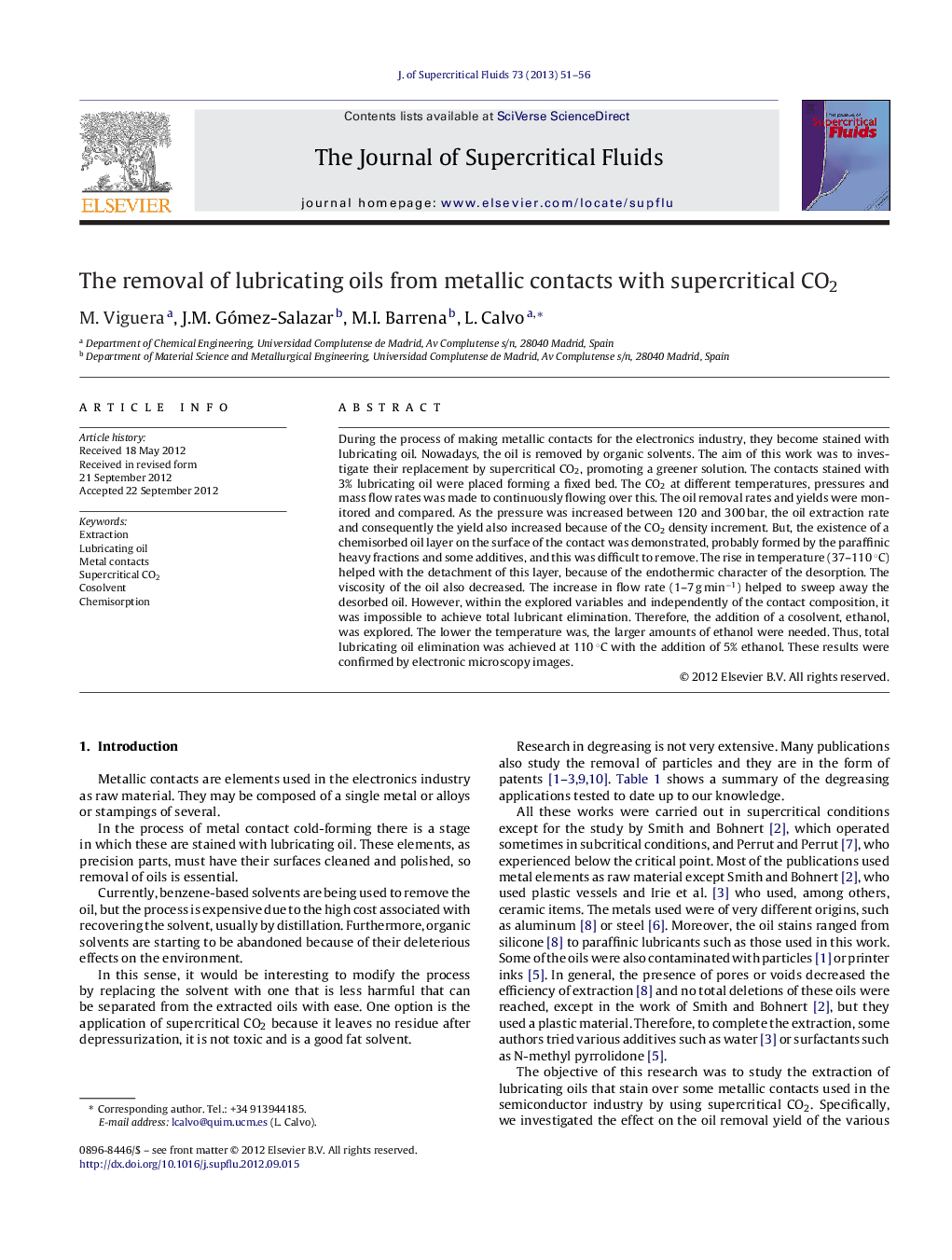| Article ID | Journal | Published Year | Pages | File Type |
|---|---|---|---|---|
| 230661 | The Journal of Supercritical Fluids | 2013 | 6 Pages |
During the process of making metallic contacts for the electronics industry, they become stained with lubricating oil. Nowadays, the oil is removed by organic solvents. The aim of this work was to investigate their replacement by supercritical CO2, promoting a greener solution. The contacts stained with 3% lubricating oil were placed forming a fixed bed. The CO2 at different temperatures, pressures and mass flow rates was made to continuously flowing over this. The oil removal rates and yields were monitored and compared. As the pressure was increased between 120 and 300 bar, the oil extraction rate and consequently the yield also increased because of the CO2 density increment. But, the existence of a chemisorbed oil layer on the surface of the contact was demonstrated, probably formed by the paraffinic heavy fractions and some additives, and this was difficult to remove. The rise in temperature (37–110 °C) helped with the detachment of this layer, because of the endothermic character of the desorption. The viscosity of the oil also decreased. The increase in flow rate (1–7 g min−1) helped to sweep away the desorbed oil. However, within the explored variables and independently of the contact composition, it was impossible to achieve total lubricant elimination. Therefore, the addition of a cosolvent, ethanol, was explored. The lower the temperature was, the larger amounts of ethanol were needed. Thus, total lubricating oil elimination was achieved at 110 °C with the addition of 5% ethanol. These results were confirmed by electronic microscopy images.
Graphical abstractFigure optionsDownload full-size imageDownload as PowerPoint slideHighlights► Supercritical CO2 was used to eliminate lubricating oil from metallic contacts. ► Extraction rate and yield increased with pressure and temperature. ► But a chemisorbed oil layer on the contact impeded the total removal. ► This was independent of the composition of the contact made primarily of Ag. ► High turbulence and the addition of ethanol allowed the contacts to be cleaned.
